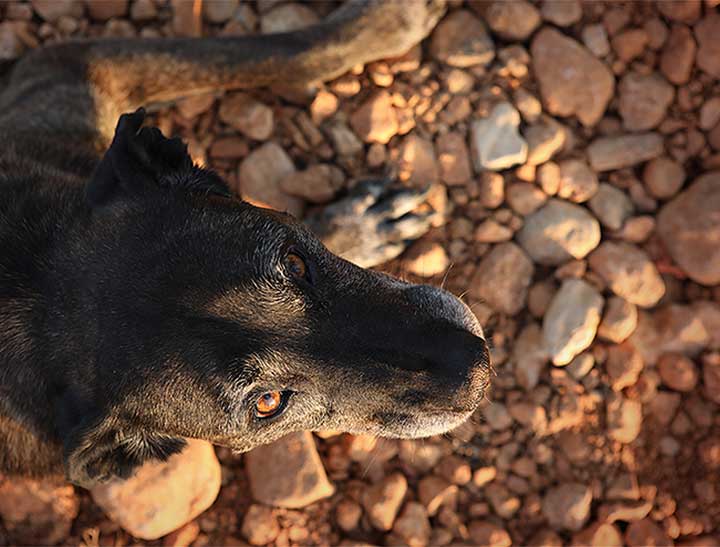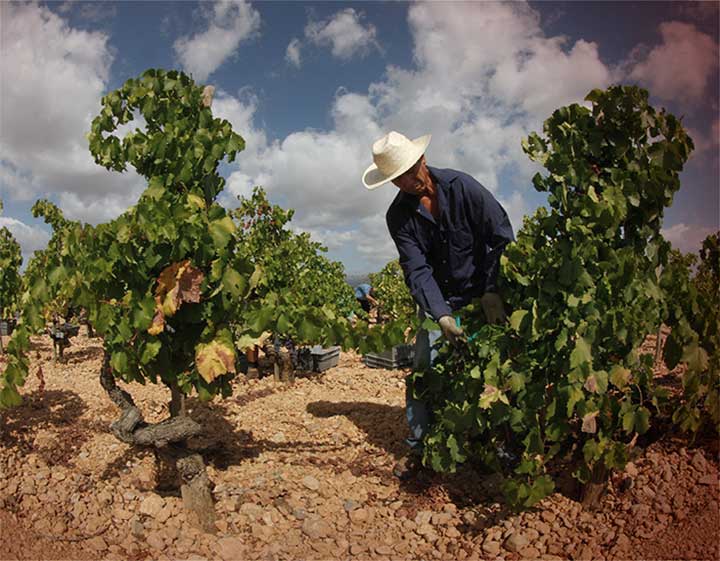-
Vineyards
RESPECT FOR THE LAND, THE HISTORY AND THE LEGACY
The vineyards of Can Ribas, of which there are references since the 17th century, are located in Consell, at the foot of the Tramuntana mountains.
-
Vineyards
RESPECT FOR THE LAND, THE HISTORY AND THE LEGACY
The vineyards of Can Ribas, of which there are references since the 17th century, are located in Consell, at the foot of the Tramuntana mountains.
Terroir
THE QUALITY OF A WINE STARTS AT THE VINEYARD
The Mediterranean climate, the insularity and the location of the vines, at 120 metres above sea level, on a soil with alluvial origins, with pebbles and gravel, give this vineyard its distinctive and unique personality. The 49 hectares of fully owned vineyard are taken care of with a traditional and organic viticulture with the marked by tradition. The farming is organic and sustainable.
The climate
MILD WINTERS, DRY AND HOT SUMMERS
The extreme temperatures are attenuated by the closeness to the sea, with annual average temperatures between 16ºC and 18ºC, and maximum of 31ºC in summer and minimum of 5ºC in winter. Rainfall, concentrated mostly in autumn, is very irregular from one year to another and fluctuates between 400 and 600 mm., with long periods of drought during the grape ripening phase. Insolation is high, with more than 2.700 hours of light per year, that together with hot summers cause early harvests that start towards of August.
The “Embat”, the coastal breeze that refreshes the land, is present almost daily during the spring and summer months and helps counter the effects of the high relative humidity, with average values around 74%.


Soils
A CHALLENGE FOR THE VINES
The sedimentary rocks were carried by alluvium from the Tramutana mountains and disposed in a huge sedimentation valley (graben) which is the central depression of Mallorca.
The soils range from moderately deep to deep, with a sandy loam texture matrix and 80% of the coarse fraction (gravel) is of small size, which implies a small nutrient and water retention capacity, a quick permeability and a greater conduction and refraction of temperature.
Its pH is basic, and the content of organic matter is low. They are also characterized by the variable presence of conglomerates, more or less cemented, that can in some areas limit the explorable soil by the roots.
Varieties
LOCAL PREDOMINANCE OF MANTONEGRO, GARGOLLASA AND PRENSAL BLANC
They represent 70% of our vineyard and are part of the genetic heritage and vine diversity of our islands.
They are noble varieties, that have evolved and have adjusted to the restrictive and stressful soil and climate conditions. Possibly the native varieties are the ones that will adapt best to continue producing quality wines in a climate change scenario.


Tradition and science
OBSERVATION: BASIS OF OUR GROWING PRACTICES AND TECHNIQUES
The basis of our viticulture has been developped through observation, experience and transmission of knowledge from generation to generation. However, we consider essential the input of measurement viticulture methods and experimentation to provide technical support for the decision making in a context with higher environmental, economical and social requirements.
The main objective of our vineyard management is to regulate the vigour during the whole growth cycle, regulate the load in accordance with the leafy surface and developthe a good architecture of the vine stock to improve ventilation and insulation of the clusters and the leaves to obtain healthy grapes with optimum ripeness.
Sustainability
SEARCHING FOR BALANCE
Bodega Ribas has a strong commitment with environmental and social sustainability. To this effect, we are working on the analysis of the impact of our actions and thus to exercise a more conscious and rational management, optimizing the use of the natural ressources and improving the quality of life of our environment.



